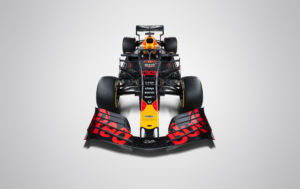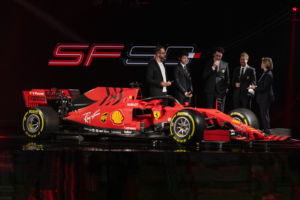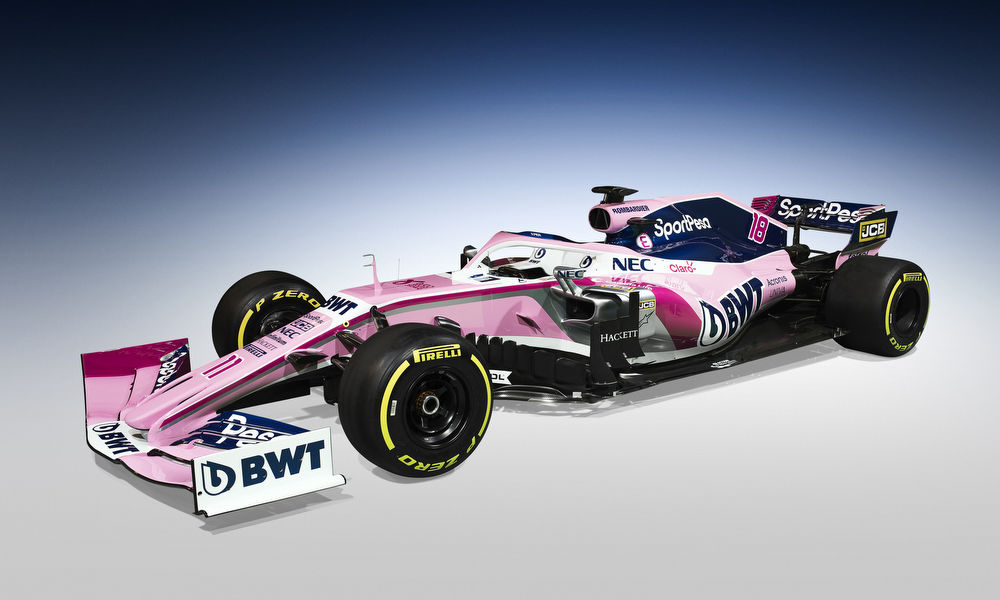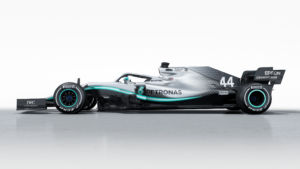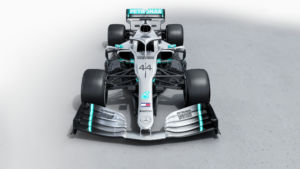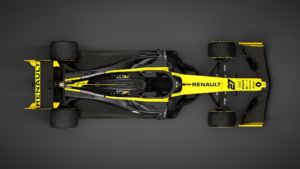Barcelona enjoyed the dulcet tones of multiple V6 engines today, as the first session of winter testing finally got under way.
Alfa Romeo were awake bright and early to reveal their car and livery – becoming the final team to do so – before Kimi Raikkonen took it out for a quick spin (literally), getting stuck in the gravel in the first 15 minutes of the session.
Red Bull’s social media team were also up early do a second ‘reveal’, showing off the traditional matte livery they have used over the past four years and disappointing fans that had grown fond of the shakedown livery they had initially debuted.
Sebastian Vettel’s Ferrari began taking the challenge to Mercedes early doors, putting in an impressive number of laps and topping the timing sheet with an eyebrow-raising 1m18. The same success could not be said of Ferrari’s sub-team Haas; Romain Grosjean was forced to pull over on track, causing a red flag after a couple of successful installation laps due to fuel pressure loss. At least Haas’s mechanics weren’t short of work to do!
At the lunchtime break, Vettel remained at the top of the timesheets with a 1m18 and an impressive 72 laps. Just behind him was Perez in the Racing Point car with a 1m19, and Bottas with a 1m20. While Ferrari seemed keen to display their might early on, Mercedes clearly felt no pressure to respond so early in the session.

The session recommenced at 2pm and although some teams chose to test with the same driver, others decided to make the swap and we saw five-time world champion Lewis Hamilton take the wheel for the first time since the shakedown at Silverstone last Friday.
Hamilton put in a healthy number of laps, most of them running in the 1m20 range, once again feeling absolutely no pressure to be topping the timing sheets just yet.
There was a slightly hair-raising moment for McLaren when Carlos Sainz’s car stopped at the end of the pit lane causing the third red flag of the day. McLaren were quick to redeem themselves though, managing to run an impressive 119 laps, staying comfortably in the 1m20s, and even managing to come second to Vettel’s Ferrari with a respectable 1:18.5. It’s an optimistic start for a team that has suffered a great deal of disappointment in previous seasons.
On the theme of disappointment, more sad news came from the Williams garage. After being unable to complete a planned shake-down on Saturday, and announcing they would not be taking part in today’s testing, a further announcement came after lunch confirming they would not be able to take part in testing until Wednesday ‘at the earliest’.
Deputy team boss Claire Williams described the delay as ‘extremely disappointing’, and indeed with Robert Kubica taking a seat this season after an eight-year hiatus from F1, it is disappointing to delay his anticipated return even further.
Daniel Ricciardo made his debut for Renault this afternoon after his teammate Nico Hulkenberg had a positive morning, describing the car as “the best I’ve seen at Renault”, which is a promising hint for what is to come. Both commentators and fans are slowly getting used to seeing Danny in a black and yellow race suit, this didn’t faze Danny who put in a respectable 44 laps, making Renault one of five teams that have surpassed the 100-lap milestone today.
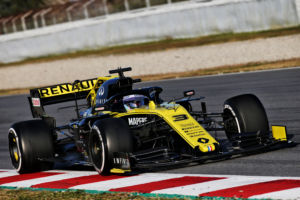
Formula One Testing, Day 1, Monday 18th February 2019. Barcelona, Spain.
There was an interesting moment in the last hour of the session between Hamilton and Kvyat in the Toro Rosso, as Kvyat pushed Hamilton to work to overtake him. After a couple of laps and pointing out the nose of the Mercedes car, Hamilton was forced to back off as he was unable to complete the manoeuvre, which begs the question: do the front-wing changes help or hinder Mercedes performance?
Kimi Raikkonen was his usual charismatic self before completing 114 laps in the freshly unveiled Alfa Romeo car, going into the test with the aim of getting a ‘more real picture of the car’, but with the unintentional aim of causing the final red-flag of the day, one minute before the end of the session.
Today was unquestionably Ferrari’s day with Vettel putting in a whopping 169 laps and remaining quickest throughout the whole session with a 1:18.1. Second came Carlos Sainz in the McLaren with a 1:18.5 and Grosjean with a 1:19.1 in spite of only completing 65 laps before stopping on track earlier in the session.
Overall though, the theme for today was getting a feel for the car and putting the laps in; no exciting racing just yet, but it’s a promising start for the 2019 season.
[Featured image – Dan Istitene/Getty Images]



